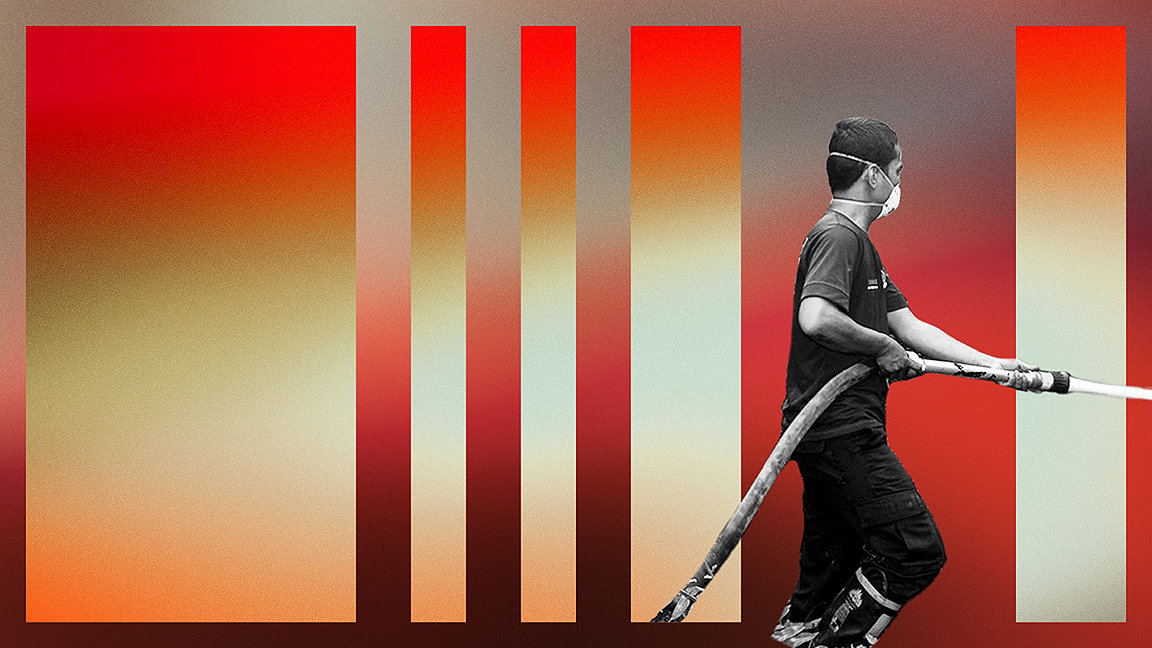
As the COVID-19 pandemic raged in 2020, many parts of the world were contending with another crisis – a record-breaking surge of wildfires. Blazes in forests in Australia, the US and Brazil devastated the environment and took several lives. In recent years, forests in Europe, the Amazon, Indonesia and Siberia were also hit. The fear is that warmer, drier conditions, less rain and deforestation will mean such events become increasingly common. Furthermore, climate change will also affect how easily forests can regenerate afterwards.
As assistant professor of forest and rangeland stewardship at Colorado State University, Camille Stevens-Rumann’s work focuses on the western US. “In forests that burned before 2000, 15-17% of areas didn't have any natural tree regeneration, but we are seeing that in places where fires occurred after 2000, about a third of the landscape doesn’t have a single tree coming back,” she says. “It’s a stark realisation that a large portion of these large forests are not recovering.” Part of her job involves deciding where replanting forest is no longer worthwhile.
In recent years, our ability to assess fire damage has improved because of advances in satellite and cellular technology. Research body the World Resources Institute, for example, recently added near-real-time mapping and analysis of wildfires to its Global Forest Watch online platform, which allows users to compare data from multiple satellites over years.
Jesus San-Miguel is an expert in wildfires at the Joint Research Centre of the European Commission, and works on the European Forest Fire Information System, which has been in place since 2005, and the Global Wildfire Information System, which is still in development. “We use data from sensors on NASA satellites to map active fires, then we do damage analysis and assessing forest regrowth, based on photosynthesis,” he says. Remote sensing technology, says San-Miguel, is evolving continuously, so, while implementing these measures internationally will be complicated and expensive, it is feasible: “We are now able to have a global coverage of areas that are burned annually. The next step is to monitor those on a continuous basis.”

New reforestation technologies are replanting trees at 10 times the rate of traditional planting
Assessing the impact of climate change on potential regrowth is part of San-Miguel’s brief: information about vegetation is combined with other data, such as precipitation to allow his team to assess and certify the condition of forests for governments to plan interventions.
While the vastness of today’s fires are relatively new, people have been dealing with the repercussions for wildfires for a long time – Melbourne-based Sam Paton has been assessing bushfire damage since 1977. He describes the process of replanting on farms in South Australia. “Typically, an audit is done to assess what trees can be salvaged. Those that won’t survive are removed and burned in a bonfire. After that, it can be a simple process of dropping tubestock plants (young plants that are ready for planting out or repotting) at specific intervals, then filling the groove with soil and watering them.”
Manual planting is a slow process in the context of large forests though, so drones are now increasingly being deployed to scatter balls of seeds, soil and nutrients. Canadian company Flash Forest is among those using a combination of drones, aerial mapping and biological seed pod technology (in which seeds are scattered from the air) for reforestation. It claims to do so at 10 times the rate of traditional planting and a fraction of the cost. Doing similar work is Australian start-up AirSeed Technologies, which has recently completed a trial in South Africa planting 10,000 seeds over 10 hectares.

In places where fires occurred after 2000, about a third of the landscape doesn’t have a single tree coming back
In the context of fires, Stevens-Rumann has seen mixed success with drone-driven planting, because it depends on soil quality and levels of moisture. “They can be really effective in tropical forests or during the rainy season,” she says. “But we’ve tried them in Colorado where it’s so dry that you can come back a while later and they’re just sitting in the ground.” In general, she advises waiting a few years before planting after a blaze. “Because there’s no vegetation holding soil in place, you have to allow for erosion and stabilisation first – otherwise trees could be washed away by rains.” In areas burned in 2020, she says, replanting will mostly start in 2022.
Over the past few years, another conversation has emerged: the concern that the very forests being planted today will be the site of future fires. “Previously, high-density replanting would take place with the intention of coming back and thinning the forest later, but often that wouldn’t happen,” says Stevens-Rumann. “That means a future fire could simply march right through the trees.” Guidelines are now being adapted to make sure that efforts to nurture green environments don’t also become kindling for the next series of disasters.

